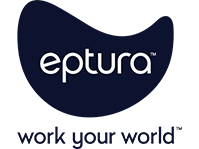
In the intricate ecosystem of healthcare, where every detail can impact patient outcomes, the maintenance of facilities often operates behind the scenes. Yet, its significance is profound. Imagine a scenario where a critical piece of medical equipment malfunctions during an emergency procedure, or an elevator halts, delaying patient transport. Such instances underscore the pivotal role of effective maintenance in healthcare settings.
The complexity of healthcare facility maintenance
Hospitals and healthcare facilities are complex infrastructures housing a vast array of medical equipment, HVAC systems, electrical networks, and more. Each component demands meticulous upkeep to ensure seamless operations. Traditional maintenance approaches, often reactive, can lead to unforeseen equipment failures, increased downtime, and escalated operational costs. Moreover, the stringent regulatory standards in healthcare necessitate rigorous documentation and compliance, adding layers of complexity to maintenance management.
Transitioning to proactive maintenance with CMMS
Enter the era of Computerized Maintenance Management Systems (CMMS). These sophisticated software solutions are revolutionizing how healthcare facilities approach maintenance. By centralizing maintenance data, automating scheduling, and facilitating real-time tracking, CMMS empowers facilities to shift from reactive to proactive maintenance strategies. This transition not only enhances equipment reliability but also optimizes resource allocation and ensures compliance with regulatory mandates.
Real-world impact: How one government healthcare network turned data into impact
The problem
Operating across 18 regions and managing over 1,100 clinics, this government healthcare organization is responsible for an immense 184 million square feet of space. But with demand for services increasing and no option to build or purchase new real estate, the organization faced a complex challenge: how to meet the growing need for patient care without expanding its physical footprint. Rising costs and limited visibility into how space was actually being used made it difficult to optimize existing assets — and even harder to make the case for change.
The solution
To address these constraints, the organization turned to Archibus by Eptura, implementing its centralized space management platform to gain full visibility across their facility portfolio. With Archibus, they could track real-time space usage and identify underutilized areas ready for repurposing. This visibility enabled them to make smarter decisions about how to allocate their resources and reimagine space for greater patient impact. For example, the platform helped the team identify a 330-square-foot room that had previously been used occasionally for X-rays. Using Archibus to assess its potential, they converted it into a multipurpose infusion treatment room — boosting in-house care delivery and reducing dependence on community care providers.
The result
The transformation paid off almost immediately. That single room conversion is now saving the organization an estimated $8.3 million annually by keeping treatment in-house. Encouraged by these results, they modeled the financial impact of a broader space optimization strategy and found that increasing their overall space utilization by just 2.5% could result in up to $2 billion in annual savings on outsourced medical care. By equipping their teams with better data and smarter tools, the organization is not only saving money—it’s delivering better patient outcomes and building a more sustainable model for care. Their success offers a powerful blueprint for any healthcare network facing similar limitations and looking to make every square foot — and every dollar — count.
Dive into the full case study here.
Key benefits of CMMS in healthcare
The adoption of CMMS in healthcare facilities brings forth a multitude of advantages:
- Enhanced equipment uptime: By facilitating preventive maintenance, CMMS ensures that medical equipment remains operational, reducing the risk of unexpected failures during critical procedures.
- Regulatory compliance: CMMS aids in maintaining comprehensive records of maintenance activities, inspections, and repairs, simplifying the process of demonstrating compliance during audits.
- Resource optimization: With real-time data on asset performance and maintenance needs, facilities can allocate resources more effectively, reducing unnecessary expenditures.
- Improved communication: Mobile CMMS solutions enable seamless communication among maintenance teams, ensuring that tasks are assigned, tracked, and completed efficiently.
Addressing potential implementation challenges
While the benefits are compelling, integrating CMMS into healthcare facilities is not without challenges. Concerns such as data security, staff training, and budget constraints often surface. However, with a strategic implementation plan, these hurdles can be overcome. Engaging stakeholders early, investing in comprehensive training programs, and selecting a CMMS solution that aligns with the facility’s specific needs are critical steps toward successful adoption.
The future of healthcare maintenance
As technology continues to evolve, the capabilities of CMMS are expanding. Integration with Internet of Things (IoT) devices allows for real-time monitoring of equipment health, enabling predictive maintenance strategies. Artificial Intelligence (AI) and machine learning algorithms are being incorporated to analyze maintenance data, predict failures, and recommend optimal maintenance schedules. These advancements promise to further enhance the efficiency and reliability of healthcare facility maintenance.
A healthy facility for healthier outcomes
The maintenance of healthcare facilities is a critical component that directly influences patient care quality and operational efficiency. Embracing CMMS solutions enables healthcare organizations to transition to proactive maintenance strategies, ensuring equipment reliability, regulatory compliance, and optimal resource utilization. As the healthcare landscape continues to advance, integrating sophisticated maintenance management systems will be instrumental in delivering exceptional patient outcomes and achieving operational excellence.




